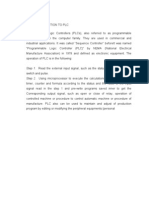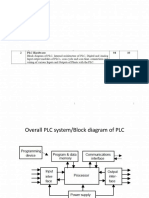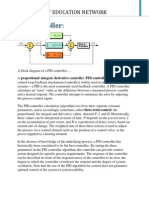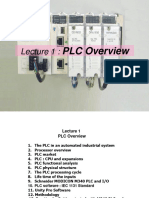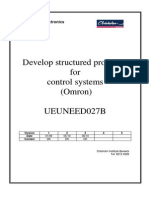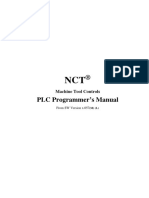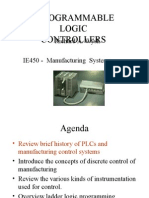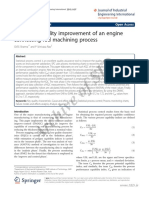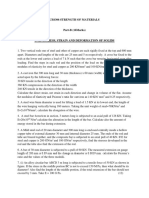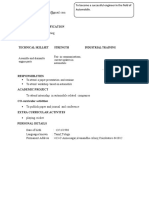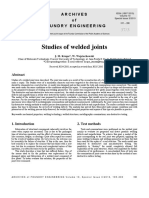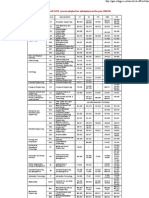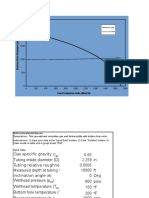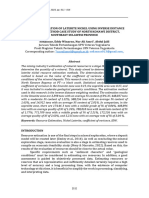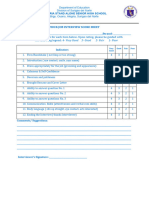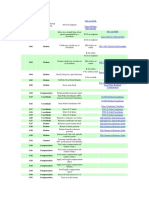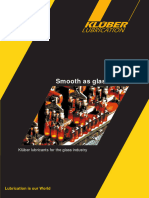DATA HANDLING
Some situations arise where a group of bits
have to be handled.
(ex) a sensor supplies an analogue signal
which is converted to, say, an 8-bit word
before becoming an input to a PLC.
The operations that may be carries out with a
PLC on data words normally include:
Moving data.
Comparison of magnitudes of data,
(i.e.)greater then, equal to or less than.
Arithmetic operations such as addition and
subtraction.
Conversions between binary coded decimal
(BCD), binary and octal.
�DATA REGISTERS
Data instructions also require
memory addresses.
The locations in the PLC
memory allocated for data are
termed as data registers.
Each data register can store a
binary word of usually, 8 or 16
bits.
� Addresses are given as
D0,D1,D2 and so on.
A 8-bit word means that a
quantity is specified to a
precision of 1 in 256, a 16-bit a
precision of 1 in 65536.
Each instruction has to specify
the form of the operation
the source of the data used in
terms of its data register
the destination data register of
the data.
�DATA MOVEMENT
For data movement, the
instruction will contain
Move data instruction
The source address of the data
The destination address of the
data
The following is the ladder
rung to transfer data from D1
to D2.
DATA COMPARISON
�SAMPLE APPLICATION
OF DATA COMPARISON
Comparison might be used when signals
from two sensors are to be compared by
the PLC before action is taken.
(ex) an alarm might be required to be
sounded if a sensor indicates a
temperature above 80oc and remain
sounding until temperature falls below
70oc
ARITHMETIC
OPERATIONS
The instruction to add or
subtract consists of:
The instruction.
The register containing the
address of the value to be
added or subtracted.
The address of the value to
which the addition or from
which the subtraction is to be
made.
The register where the result
is to be stored.
It may be used to alter the
value of some sensor input
value, perhaps a correction or
offset term or alter the preset
values of timers or counters.
The following shows the form
used for the ladder symbol for
addition with OMRON.
CODE
CONVERSIONS
All internal operations in the
CPU of a PLC are carried out
using binary numbers.
So when input is a decimal,
conversion to binary required.
� Also when a decimal output is
required, conversion from
Binary to decimal is needed.
(ex) following is the rung
employed in conversion from
BCD to binary.
ANALOG
INPUT/OUTPUT
Many sensors generate analog
signals and many actuators
require analog signals.
� Thus, some PLCs have A-D
converter fitted to input
channels and D-A converter
fitted to output channels.
(ex) speed control of a motor
so that its speed moves up to
its steady value at a steady rate.
The program is as shown
below:
Contd
A PLC equipped with analog
input channels can be used to
carry out a continuous control
function, (i.e) PID control.
� To carry out proportional
control on an analog input the
following set of operations can
be used:
Convert the sensor output to a
digital signal.
Compare the converted actual
sensor output with the
required sensor value (i.e) the
set point and obtain the
difference(error).
Multiply the error by the
proportional constant Kp.
Move this result to the D-A
converter output and use the
result as the correction signal
to the converter.
SAMPLE
APPLCATION OF
ANALOG I/O
Temperature controller.
The input could be from a
thermocouple, which after
amplification is fed through an
A-D converter into the PLC.
� The PLC is programmed to
give an output proportional to
the error between the input
from the sensor and the
required temperature.
The output word is then fed
through a D-A converter to the
actuator, a heater, in order to
reduce the error. (program in
next slide).
TEMPERATURE
CONTROL
�SELECTION OF A
PLC
Criteria to be considered are as
follows:
What i/o capacity is required,
(i.e) the number of i/o,
capability of expansion for
future needs.
2.
What types of i/o are
required, (i.e) isolation,
onboard power supply for i/o,
signal conditioning.
�3.
What size of memory is
required? This is linked to the
number of i/o and the
complexity of program used.
4.
What speed and power is
required for the CPU? This is
linked to the number of types
of instruction that can be
handled by a PLC. As the
number of types increases , a
faster CPU is required.
Likewise, the greater the
number of i/o to be handled
the faster the CPU required.












